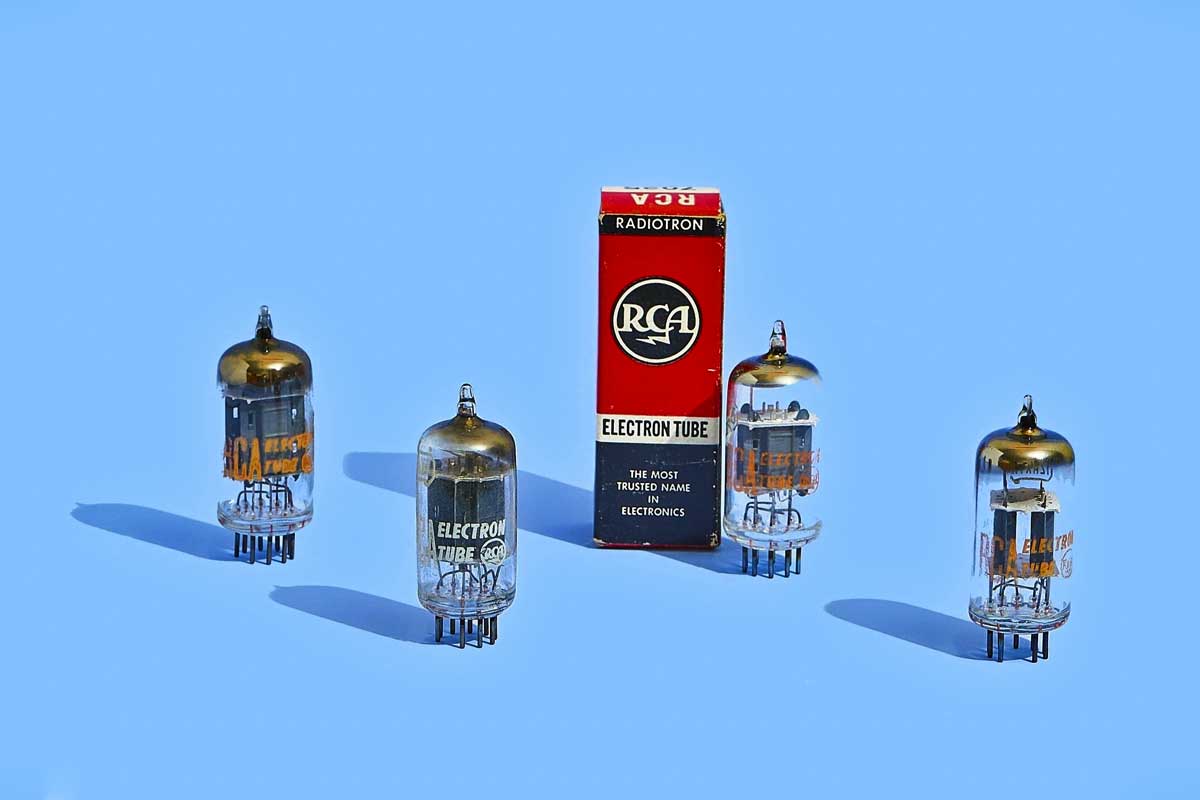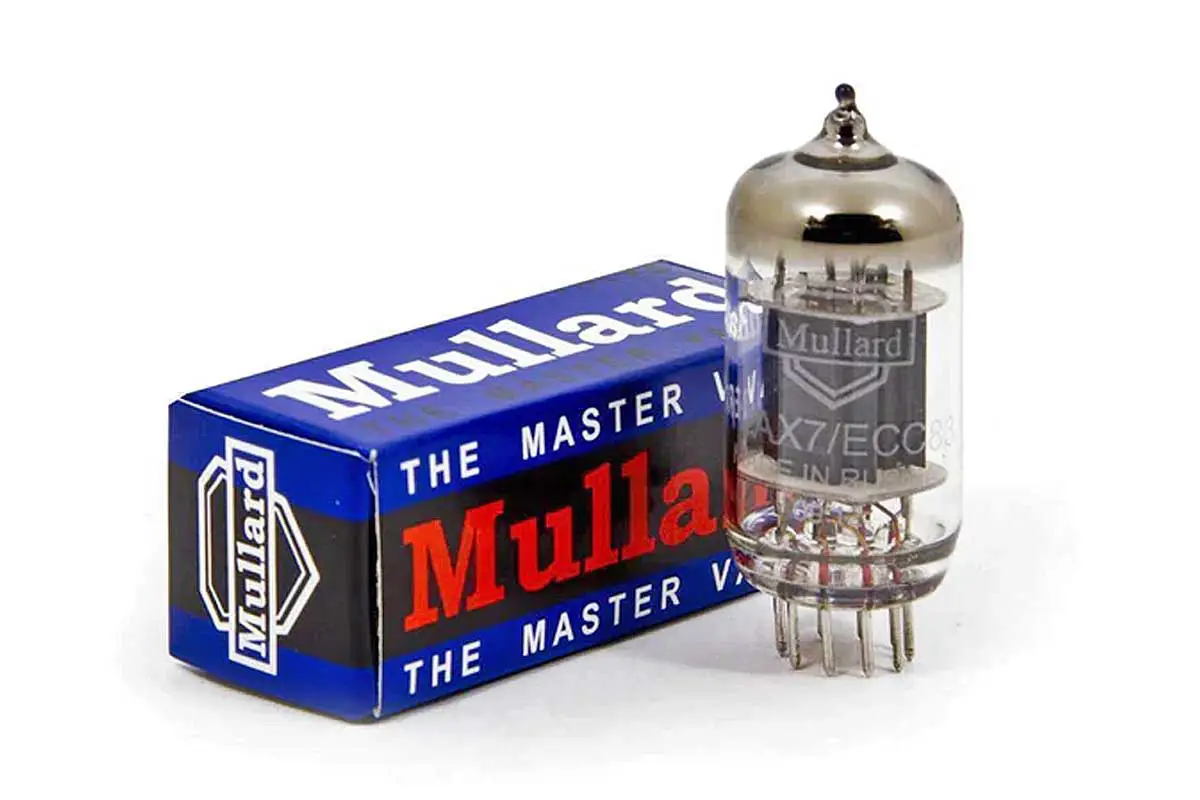When examining the differences between the ECC83 vs 12AX7, you might initially be puzzled, as these terms often arise in discussions about guitar amplifiers. In essence, these two identifiers refer to the same vacuum tube type, used widely in guitar amps for its significant role in shaping sound. This dual triode tube has been pivotal in defining the tone and character of guitar amplifiers since its inception, and numerous models of amplifiers utilize it to achieve that distinctive warm, analog richness.
Understanding the properties and nuances of the ECC83/12AX7 can help you tailor your guitar sound more precisely. Although these tubes go by different names—ECC83 is the European designation, while 12AX7 is the North American name—they are electrically and functionally identical. The variations you may encounter in performance typically originate from the manufacturing differences among brands rather than between the ECC83 and 12AX7 designations. Tubes by different manufacturers can yield subtle yet audible differences in audio output, affecting the harmonic distortion characteristics which are crucial to a guitar amp’s sonic signature.
Guitarists often explore these tube differences in their pursuit of the perfect tone. Modifying your amplifier with different brands of ECC83/12AX7 tubes can change the nuances of sound, potentially leading to a more individualized voice for your musical expression. Your quest for tone might lead you to compare tubes based on their gain levels, frequency response, and distortion qualities, each affecting how your guitar resonates through the amplifier.

Understanding ECC83 and 12AX7 Tubes
When you dive into the world of guitar amplifiers, the ECC83 and 12AX7 tubes are essential components that define the tone and performance of your amp. They are indeed the backbone of many classic and modern amp designs.
History and Origin
The 12AX7, also known as the ECC83 in Europe, was originally designed in the 1940s by RCA. Mullard, a British company, along with Philips, developed their own version dubbed the ECC83. This vacuum tube quickly became the standard for preamplification in audio equipment, including guitar amplifiers, due to its high gain.

Technical Specifications
Technically speaking, the ECC83/12AX7 is a high-mu twin triode vacuum tube. It’s known for its high voltage gain, with an amplification factor (μ) of 100. The internal construction can be either a long plate or short plate, which affect the tonal characteristics. The glass envelope houses the internal elements and is constructed from specific materials designed to withstand high temperatures and provide electrical insulation.
| Technical Aspect | Description |
|---|---|
| Amplification Factor | 100 |
| Plate Design | Available in long plate or short plate variants |
| Construction | Dual triode with glass envelope |
Branding and Variations
Several manufacturers have produced their own variations of the ECC83/12AX7. Each brand brings its own signature to the tube’s performance and tonal qualities. Brands like Mullard 12AX7 and Tung-Sol 12AX7 are renowned for their warm sound. Sovtek 12AX7 tubes are known for their reliability, while JJ 12AX7/ECC83 offers a balance between warmth and clarity. Electric Harmonix 12AX7 is lauded for its articulate sound. The materials and design nuances, like the type of plate used, influence the harmonics and the overall sound character.
Assessing Performance and Sound Quality
When you’re comparing the ECC83 and the 12AX7 tubes for your guitar amplifier, you’re looking at two key factors: performance and sound quality. These parameters are central as they dictate how your amplifier will respond to different playing styles and how it will ultimately shape your tone.
Gain and Amplification
The gain factor of these tubes is fundamental to your amp’s distortion characteristics. The 12AX7 is synonymous with high gain, which provides a substantial amount of amplification before hitting other stages of the amp. This tube is favored for its ability to produce a clean sound at lower volumes and a more aggressive tone when cranked up. On the other hand, tubes like the Mullard version of the ECC83 can offer a slightly different gain structure, often described as high gain but with a richer, complex character.
Frequency Response and Tonal Characteristics
Your tube choice significantly affects the frequency response and therefore, the tonal characteristics of your amplifier. The RCA 12AX7, for example, is applauded for its dynamic response, providing clarity and warmth that’s well-suited to versatile playing. In contrast, ECC83 tubes, depending on their make, like the Mullard, might give you a darker sound or a distinct mid-range emphasis, which can shape the melody or rhythm sections of your music according to your desired sound.
Noise and Microphonics Levels
Noise and microphonics can be the bane of high gain tubes. A tube’s susceptibility to microphonic issues can detract from your audio equipment’s performance. While the 12AX7 tube is engineered to reduce these levels, variations between brands exist, and selecting a tube that balances gain with low microphonics is key to maintaining a quality sonic output. Quality construction in these tubes ensures that the audio signal is amplified without unwanted noise or feedback, leading to a purer sound reproduction.
Impact on Guitar Amplifiers
When selecting tubes for your guitar amplifier, understanding the differences between ECC83 and 12AX7 tubes is crucial. These tubes impact the amplification process and tonal output, directly influencing how your musical style is conveyed.
Tube Role in Amplification
The preamp tube is at the heart of audio amplification within your guitar amplifier. It’s responsible for the initial increase in the signal’s strength before it hits the power amp stage. Both the ECC83 and the 12AX7 are dual triode tubes commonly used in the preamp section, providing the necessary gain that guitarists rely on for both clean and distorted tones.
Influence on Guitar Amplifier Tone
Your amplifier’s tonal characteristics can be greatly affected by the type of preamp tube. These differences may not be stark but can be noticeable to discerning ears. The ECC83 and 12AX7, while similar, have subtle variances in gain levels and frequency responses affecting the harmonics and overall tone of the amplifier. You may find the ECC83 lending a slightly warmer sound or the 12AX7 offering a bit more bite to your guitar’s voice.
Choosing Tubes for Musical Style
The triode you select should complement your musical style. For instance, a blues guitarist may seek the smooth, warm overdrive that an ECC83 can facilitate, whereas a rock guitarist might prefer the sharper edge that a 12AX7 provides. The application of the tube indeed plays a role; whether the amp is used for studio recording or live performance can dictate the desired tube characteristics. Remember that guitar amplifiers are highly personal tools, and the right tube choice should align with the sound you envision for your music.
Comparative Analysis of ECC83 and 12AX7 Variants
In your quest for the perfect tone, understanding the subtle differences between the ECC83 and the 12AX7 tubes and their variants is crucial. Here’s a detailed look at brand comparisons, price and availability, and longevity and durability of these tubes to inform your choice.
Brand Comparisons
Several reputable brands produce variants of ECC83 and 12AX7 tubes, each with unique characteristics. Mullard ECC83 is cherished for its robust and smooth sound, while Genalex 12AX7 responds well to overdrive, making it a favorite for guitarists seeking a classic rock tone. The Sovtek 12AX7 leans towards affordability and is readily available. High-end tubes such as the Telefunken and the JJ Gold Pin ECC803 are recognized for superior quality and intricate tonal nuances.
Price and Availability
The price of ECC83 and 12AX7 tubes can vary significantly. Budget-friendly options include the Electro-Harmonix 12AX7 and Sovtek Long Plate 12AX7, which offer good performance at a lower cost. For those with a higher budget, the Genalex Gold Pin and Tung-Sol Gold Pin 12AX7 provide premium quality but come at a premium price. Availability depends on manufacturing and shipping factors, with brands like JJ, Mullard, and Electro-Harmonix generally maintaining good stock levels.
Longevity and Durability
Durability and longevity are important considerations, since tube replacement can be both costly and time-consuming. Tubes like the JJ ECC803/12AX7 and Mullard 12AX7 are recognized for robust construction and long life. On the other hand, RCA and GE are historical brands known for their long-lasting tubes, but they may be harder to find in today’s market. For a balance between longevity and cost, Sovtek and JJ Gold Pin 12AX7 are reliable choices.
Valve Amplifier Tube Comparisons
Want to learn more about guitar amp tubes? Explore the nuanced distinctions between preamp and power tubes, including popular matchups like ECC83 vs 12AX7 and EL34 vs KT88, as we unravel the sonic differences that shape your guitar’s unique voice.
| Tube Types | Application |
|---|---|
| ECC83 vs 12AX7 | Preamp Tubes |
| 12AU7 vs 12AX7 | Preamp Tubes |
| 6L6 vs EL34 | Power Tubes |
| 6L6 vs KT66 | Power Tubes |
| 6L6 vs 6V6 | Power Tubes |
| 5881 vs 6L6 | Power Tubes |
| EL34 vs EL84 | Power Tubes |
| EL34 vs KT88 | Power Tubes |
| EL34 vs KT77 | Power Tubes |
| EL34 vs KT66 | Power Tubes |
| 6V6 vs EL84 | Power Tubes |
